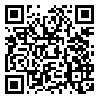BibTeX | RIS | EndNote | Medlars | ProCite | Reference Manager | RefWorks
Send citation to:
URL: http://jmums.mazums.ac.ir/article-1-9345-en.html

 , Mohammad Hossein Baghianimoghadam
, Mohammad Hossein Baghianimoghadam 
 , Hassan Rezaeipandari
, Hassan Rezaeipandari 
 , Mosharafeh Chaleshgar
, Mosharafeh Chaleshgar 
 , Mohammad Ali Morowatisharifabad
, Mohammad Ali Morowatisharifabad 

Background and purpose: Inhalation is one of the main ways of exposure to occupational pollutants that can cause acute and chronic respiratory complications in workers. This study aimed to identify the predictors of using respiratory protection masks among workers based on the theory of planned behavior.
Materials and methods: An analytical cross-sectional design was employed. Cluster sampling was used by which 120 workers exposed to occupational dust were recruited from four sanitary ware companies in Yazd, Iran. A self-administered questionnaire was applied. The validity and reliability of the scale was previously confirmed in an exploratory study. Statistical analyses of the data included bivariate correlation and linear regression.
Results: The workers used respiratory mask in 19 days of the past month and intended to use that for 22 days in the next month. The relationship between intention and behavior was the strongest. Totally, perceived behavioral control, subjective norms, and attitude variables accounted for 20.8% of the variation in behavior with subjective norms being the strongest significant predictor.
Conclusion: Our results demonstrated the importance of subjective norms on using respiratory protection masks among workers. According to the relatively good identification of predictors of using respiratory protection masks, application of this theory is suggested in predicting safety related behaviors.
| Rights and permissions | |
 |
This work is licensed under a Creative Commons Attribution-NonCommercial 4.0 International License. |




